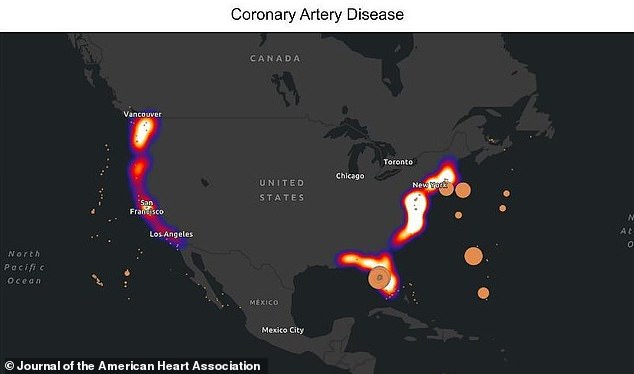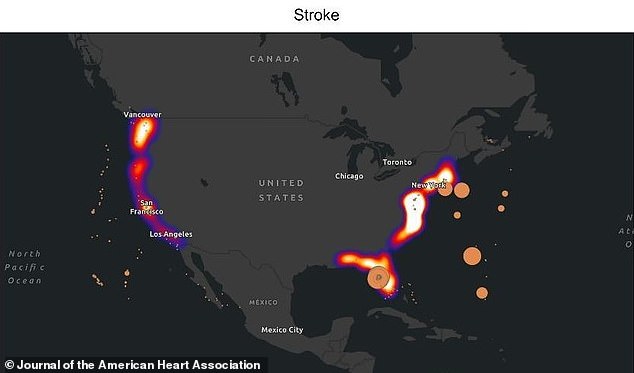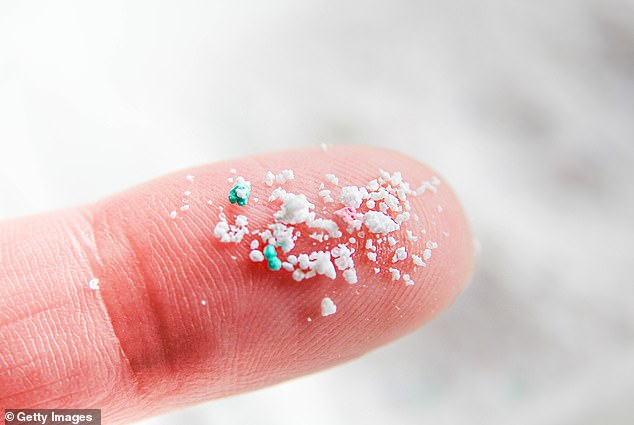- READ MORE: Terrifying images reveal what microplastics can do to your body
Living along America's coastal waters could be putting millions of people at risk for an early death from diabetes , heart disease, or a stroke.
A new study by the American Heart Association warned that microplastics, tiny particles found to be invading every environment and organism on Earth, are causing more serious health issues for people living near the oceans .
Researchers revealed that coastal counties near oceans heavily polluted with microplastics had 18 percent more residents with Type 2 diabetes, seven percent more cases of coronary artery disease, and nine percent more strokes than counties with low pollution levels.
Counties along the Gulf Coast and East Coast had higher disease rates than people living along the West Coast, in California , Oregon , and Washington.
Dr Sarju Ganatra from Lahey Hospital & Medical Center in Massachusetts said: 'Plastic pollution is not just an environmental issue – it may also be a public health issue.'
Microplastics include all plastic particles less than five millimeters in size, which is the width of a pencil eraser or smaller.
Particles smaller than the human eye can see come from decomposing plastic waste like bottles, synthetic clothes, personal care products, and countless other manufactured good.
Scientists believe these particles make their way from polluted oceans into drinking water, seafood, and even the air, eventually getting consumed by people, which they theorize can increase harmful levels of inflammation and cause numerous diseases.


There are more than 250 coastal counties along the US mainland which are home to over 94 million people, according to the National Oceanic and Atmospheric Administration (NOAA).
To conduct their study, Ganatra and his team examined 152 US coastal counties along the Pacific Ocean, Atlantic Ocean, and Gulf of America (formerly the Gulf of Mexico).
They collected data on microplastic levels in ocean waters within 200 nautical miles of these counties between 2015 and 2020, using information from the National Centers for Environmental Information.
Researchers sorted the counties into four groups based on the amount of microplastics in the water: low (almost no plastics), medium (up to one small particle per 200 bathtubs of water), high (a handful of particles per bathtub), and very high (10 or more particles per bathtub).
'Even in health care – a field devoted to healing – we rely heavily on single-use plastics. Much of it ends up in landfills or the ocean, where it fragments into microplastics and enters the ecosystem,' Ganatra explained.
The team then used health data from the Centers for Disease Control and Prevention (CDC), gathered between 2015 and 2020, to look up the rates of Type 2 diabetes, coronary artery disease (plaque buildup in the arteries), and stroke in these counties.
They adjusted for factors like age, gender, income, access to doctors, air pollution, and neighborhood conditions, ensuring the results weren't skewed.
The results showed a clear pattern: counties with very high microplastic pollution in nearby ocean waters had significantly higher rates of health problems that have been linked to an early death.
A study in The Lancet has shown that a Type 2 diabetes diagnosis can significantly reduce someone's life expectancy, shaving off more than a decade for people who develop the disease in their 30s.
According to the World Health Organization, stroke survivors may die between five and 10 years earlier than the average person who never had a stroke.
Meanwhile, researchers in Europe have found that coronary artery disease is linked to a significant drop in life expectancy, with middle-aged adults losing five to eight years of life due to their higher risk for heart attacks and sudden cardiac death.


The study in Journal of the American Heart Association does have its limitations. It only looked at county-level data, not individual people, so it can't prove that microplastics directly cause these health issues.
It also didn't measure microplastics in people's bodies or pinpoint exactly how they enter the body, whether through water, food, or the air.
Additionally, the study focused on ocean water pollution, not other sources like fish or plants which came from the sea and have been shown to be full of plastic particles as well .
Despite the drawbacks, Ganatra contended that the results show a clear connection between the world's growing plastic crisis and rising rates of poor health and early death.
'This study adds to a growing body of evidence that the garbage we discard into the environment often finds its way back to us,' the study's senior author said.
Previous research has also linked microplastic contamination in the human body to conditions like dementia, infertility, eczema, premature aging, and obesity.
Additionally, previous studies in mice have linked nanoplastics (plastic particles that even smaller than microplastics) in the brain to cognitive changes, Parkinson's disease, and some types of dementia.
Read more
إرسال تعليق